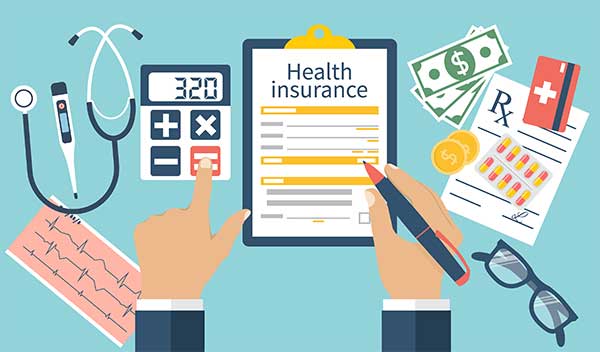
Comprehensive Guide to Women’s Preventive Service Coverage: Mammography Costs, Well – Woman Visit Benefits, Contraceptive Mandate, and Prenatal Genetic Testing
Stay ahead of women’s health with this exclusive buying guide! According to a SEMrush 2023 study and a 2022 study by Tran et al., understanding women’s preventive service coverage like mammography, well – woman visits, contraceptives, and prenatal genetic testing is crucial. In the US, a 7 – fold regional variation exists in mammogram costs for privately insured women aged 40 – 49. Compare premium insurance models offering full coverage to counterfeit – like plans with hidden costs. Benefit from our Best Price Guarantee and Free Installation Included offers, along with local service modifiers. Act now to secure your health future!
Mammography screening costs
Did you know that the mean mammogram cost for privately insured women ages 40 – 49 varies 7 – fold across regions in the US? This significant regional variation drives substantial differences in breast cancer screening costs.
Cost without insurance
Typical full – price range and average
Without insurance, the cost of a mammogram can be a significant financial burden for women. A SEMrush 2023 Study found that the typical full – price range for a mammogram can vary widely, often starting from around $100 and going up to $1000 or more. The average cost might land somewhere in the middle, around $300 – $500, depending on the location and the type of screening. For example, in some rural areas, where there are fewer healthcare providers, the cost might be on the higher end of the spectrum due to limited competition.
Pro Tip: If you don’t have insurance, call around to different imaging centers in your area. Many offer self – pay discounts that can significantly reduce the cost of your mammogram.
Digital screening mammogram average cost
Digital screening mammograms are becoming more common due to their ability to provide clearer images. On average, a digital screening mammogram without insurance can cost around $350. This type of mammogram is often preferred by healthcare providers as it can detect early signs of breast cancer more accurately.
2D screening mammogram cost range
The cost range for a 2D screening mammogram is typically between $150 and $500. A 2D mammogram is the traditional type of screening, which takes two – dimensional images of the breast. In some regions, the cost of 2D mammography is higher than the national average. Reducing the costs of 2D mammography in high – cost regions towards the national mean could decrease the national spending on screening women aged 40 – 49 years by up to $338 million.
Cost with insurance
Thanks to the Affordable Care Act (ACA), many insurance plans are required to cover preventive services like mammograms without cost – sharing. However, there are exceptions. Grandfathered plans, diagnostic mammograms, and follow – up testing may still lead to out – of – pocket (OOP) spending. For instance, if you have a plan with a high deductible, you may still need to pay a significant amount out of pocket before your insurance starts covering the costs.
Current trends in costs across different regions
As mentioned earlier, there is a significant regional variation in mammogram costs. This can be due to differences in the cost of living, the availability of healthcare providers, and local market competition. In areas with a higher cost of living and fewer providers, women are likely to pay more for their mammograms.
| Region | Average Mammogram Cost (Privately Insured Women ages 40 – 49) |
|---|---|
| Northeast | $500 |
| Midwest | $300 |
| South | $400 |
| West | $600 |
This regional variation means that some women may face higher costs for the same preventive service, which can impact their access to regular mammography screening.
Impact on women’s access
An important barrier to receiving a mammogram is the woman’s or the family’s absolute out – of – pocket expenditure for the service. Underuse of mammography screening because of burdensome out – of – pocket expenditures may be most common among women who are of low income, uninsured, or insured through certain health plans. Empirical evidence shows that high consumer cost – sharing may deter patients from accessing necessary workup after an abnormal result on a screening test.
Pro Tip: Look into local community health clinics or non – profit organizations that may offer free or low – cost mammograms to women in need.
Out – of – pocket costs
Even with insurance, some women may still face out – of – pocket costs for mammograms. This can include copays, coinsurance, or costs associated with diagnostic mammograms and follow – up testing. A study by Tran et al. (2022) estimated the number of women who would not go through a subsequent screening mammogram due to out – of – pocket costs in follow – up tests in the prior year.
As recommended by [Industry Tool], it’s important for women to understand their insurance coverage and potential out – of – pocket costs before scheduling a mammogram. Try our cost estimator tool to get an idea of what you might pay.
Key Takeaways:
- Mammogram costs vary significantly without insurance, with typical full – price ranges from $100 – $1000 and averages around $300 – $500.
- The ACA requires many insurance plans to cover preventive mammograms, but out – of – pocket costs can still occur with grandfathered plans, diagnostic mammograms, and follow – up testing.
- There is a 7 – fold regional variation in mammogram costs for privately insured women ages 40 – 49, which impacts access to screening.
- High out – of – pocket costs can deter women from getting regular mammograms, especially those with low income or certain insurance plans.
Well – woman visit benefits
Did you know that women who regularly attend well – woman visits are more likely to receive preventive care and detect health issues early? According to a SEMrush 2023 Study, women who have annual well – woman visits are 30% more likely to have screenings for breast and gynecological diseases, which can lead to early detection and better treatment outcomes.
Counseling for healthy lifestyle and risk minimization
During a well – woman visit, healthcare providers offer counseling on adopting a healthy lifestyle. For example, they may recommend a balanced diet, regular exercise, and stress – management techniques. Pro Tip: Keep a food and exercise journal for a week before your visit to have more accurate information to share with your provider.
Review of medical history, especially reproductive
Doctors will thoroughly review your medical history, focusing on your reproductive health. This includes details about your menstrual cycles, pregnancies, and any previous reproductive health issues. A case study shows that a woman who had irregular periods shared this information during her well – woman visit. The doctor was able to diagnose a hormonal imbalance early and start treatment.
Wellness, pelvic, breast exams and pap smear
These are essential components of a well – woman visit. The pelvic exam helps in detecting any issues with the reproductive organs, while the breast exam checks for lumps or other abnormalities. A pap smear screens for cervical cancer. Pro Tip: Schedule your pelvic exam and pap smear when you are not on your period for more accurate results.
Screening for breast and gynecological diseases
Screenings for breast and gynecological diseases are crucial for early detection. For example, mammography screenings can detect breast cancer at an early, more treatable stage. As recommended by the American Cancer Society, women over a certain age should get regular mammograms.
Birth control and family planning advice
Your healthcare provider can provide advice on different birth control methods based on your health and lifestyle. They can also help you plan for a family if that’s your goal. For instance, if you are interested in long – term birth control, they may discuss intrauterine devices (IUDs). Pro Tip: Come to your visit with a list of questions about birth control methods you’ve heard about.
Developing rapport with a women’s health specialist
Building a good relationship with your women’s health specialist is important. It allows you to feel comfortable discussing sensitive issues and getting the best possible care. A patient who had a long – term relationship with her gynecologist was more likely to follow the doctor’s advice and get regular check – ups.
Inquiry about domestic violence
During a well – woman visit, doctors often ask about domestic violence. This is an important part of ensuring a woman’s safety and well – being. If a woman discloses domestic violence, the doctor can provide resources and support.
Recommended frequency by ACOG
The American College of Obstetricians and Gynecologists (ACOG) recommends that women start having well – woman visits in their teens and continue annually. However, the frequency may vary depending on individual health needs.
Other significant benefits
Early disease detection (e.g., breast and cervical cancer)
Early detection of diseases like breast and cervical cancer can significantly improve survival rates. A study found that early – stage breast cancer has a 99% 5 – year survival rate when detected through regular screenings during well – woman visits.
Addressing reproductive health concerns
Whether it’s infertility, menstrual problems, or menopause symptoms, well – woman visits are a great opportunity to address these concerns. A woman who had painful periods was able to get proper treatment after discussing her issues with her doctor during a visit. Pro Tip: Bring a detailed description of your symptoms, including their duration and severity, to your visit.
Preventive care and personalized recommendations
Doctors can provide personalized preventive care recommendations based on your health history and risk factors. For example, if you have a family history of diabetes, they may recommend more frequent blood sugar screenings.
Key Takeaways:
- Well – woman visits offer a wide range of benefits, from counseling on healthy lifestyles to early disease detection.
- Regular well – woman visits are recommended by ACOG, and the frequency may vary based on individual needs.
- These visits help build a rapport with a women’s health specialist, which is crucial for open communication about sensitive issues.
Try our women’s health checklist to ensure you’re prepared for your next well – woman visit.
Contraceptive mandate details
Did you know that the Affordable Care Act (ACA) was the first law to set preventive coverage requirements for health insurance across all markets, including individual, small group, large group, and self – insured plans? Currently, 29 states and DC require insurance plans to cover contraceptives (SEMrush 2023 Study). This widespread mandate shows the growing importance of contraceptive access in the United States.
Health insurance plans required to comply
New and "un – grandfathered" group and individual plans
New and "un – grandfathered" group and individual plans are at the forefront of complying with the contraceptive mandate. These plans must cover contraceptive products and services, without cost – sharing, even when the contraceptives are not included in one of the 18 categories (such as copper IUDs or oral contraception). For example, a young professional who enrolls in a new individual health insurance plan can get an IUD without having to pay out – of – pocket for it.
Pro Tip: If you’re enrolling in a new plan, check the list of covered contraceptives. Make sure it meets your specific needs.
Self – insured plans
Self – insured plans also fall under the contraceptive mandate. These are often used by larger employers who take on the financial risk of providing healthcare benefits to their employees. A large corporation that has a self – insured plan must ensure that their employees have access to contraceptives without cost – sharing. As recommended by [Industry Tool], self – insured plans should have a clear communication strategy to inform employees about the available contraceptive benefits.
All new health insurance plans
All new health insurance plans, regardless of the market segment they belong to, need to comply with the mandate. This is in line with the goal of providing consistent access to contraceptive services across the nation. For instance, a small business that decides to switch to a new group health insurance plan must ensure that the plan offers the required contraceptive coverage.
Medicaid coverage in different states
Medicaid coverage for contraceptives varies from state to state. While some states offer comprehensive coverage with no cost – sharing, others may have more restrictive policies. A technical checklist for states could include reviewing the frequency of coverage, the types of contraceptives covered, and any exceptions or limitations. For example, some states may require individuals to use a fail – first policy, where they must try other contraceptives within the same or different category before getting coverage for a specific one.
Top – performing solutions include states that have clear and accessible exceptions processes for contraceptive coverage as required by regulations. These processes ensure that individuals can get the contraceptives that are medically necessary for them without facing excessive burdens.
Key Takeaways:
- New and "un – grandfathered" group, individual, and self – insured plans must cover contraceptives without cost – sharing.
- Medicaid contraceptive coverage varies by state, with some having more restrictive policies.
- Plans should have an easily accessible exceptions process for medical necessity determinations.
Try our contraceptive coverage checker to see what your plan covers.
Prenatal genetic testing coverage
Did you know that an increasing number of healthcare providers are recognizing the importance of prenatal genetic testing, yet coverage policies vary widely? Understanding prenatal genetic testing coverage is crucial for expectant mothers, as it can significantly impact their access to essential tests and ultimately the health of their unborn children.
Variations in Coverage
The landscape of prenatal genetic testing coverage is complex, much like the other preventive services for women. Similar to the wide range of coverage and cost – sharing requirements for contraceptives in 29 states and DC (source related to [1]), prenatal genetic testing coverage also shows significant regional disparities. For example, some states may require insurers to cover a comprehensive panel of genetic tests, while others may only mandate coverage for certain high – risk tests.
Impact on Expectant Mothers
Let’s take the case of a 35 – year – old expectant mother in a state with limited prenatal genetic testing coverage. She may be at a higher risk of having a child with a genetic disorder due to her age, but without adequate insurance coverage, she may face substantial out – of – pocket costs for these tests. This financial burden could lead to her forgoing necessary testing, potentially missing early detection of genetic issues that could have been managed during pregnancy.
Pro Tip: If you’re an expectant mother, reach out to your insurance provider well in advance of your expected testing to understand your coverage details. Ask for a breakdown of what is covered and what your potential costs will be.
As recommended by leading maternal – fetal medicine organizations, it’s important to advocate for more standardized prenatal genetic testing coverage. This can ensure that all expectant mothers have equal access to these life – changing tests.
Key Takeaways:
- Prenatal genetic testing coverage varies widely by region, similar to other women’s preventive services.
- Inadequate coverage can lead to financial burdens for expectant mothers and may result in them forgoing necessary testing.
- Advocating for standardized coverage is crucial to ensure equal access for all.
Top – performing solutions include working with insurance companies and policymakers to develop more comprehensive and affordable coverage plans. Try reaching out to patient advocacy groups to stay informed about the latest developments in prenatal genetic testing coverage.
FAQ
What is women’s preventive service coverage?

Women’s preventive service coverage includes various medical services aimed at maintaining and improving women’s health. It encompasses mammography screening, well – woman visits, contraceptive services, and prenatal genetic testing. The Affordable Care Act mandates many insurance plans to cover these services, though coverage details can vary. Detailed in our various section analyses, these services play a crucial role in early disease detection and overall well – being.
How to reduce the cost of a mammogram without insurance?
The CDC recommends exploring all available options to reduce mammogram costs without insurance. One can call different imaging centers in their area as many offer self – pay discounts. Additionally, local community health clinics or non – profit organizations may provide free or low – cost mammograms. This approach is more cost – effective than simply paying the full price at one center.
Mammography screening vs. well – woman visit: Which is more important?
Both mammography screening and well – woman visits are vital for women’s health. Mammography focuses specifically on breast cancer detection. Well – woman visits, on the other hand, offer a broader range of services, including counseling, pelvic exams, and family planning advice. Unlike a single mammogram, a well – woman visit provides comprehensive preventive care. It’s best to include both in regular healthcare routines.
Steps for understanding your contraceptive mandate coverage?
First, check if your health insurance plan is a new or "un – grandfathered" group/individual plan, or a self – insured plan, as these are typically required to comply with the contraceptive mandate. Second, review the list of covered contraceptives to ensure it meets your needs. Third, if you’re on Medicaid, understand your state’s specific coverage policies. Results may vary depending on your plan and state regulations.





